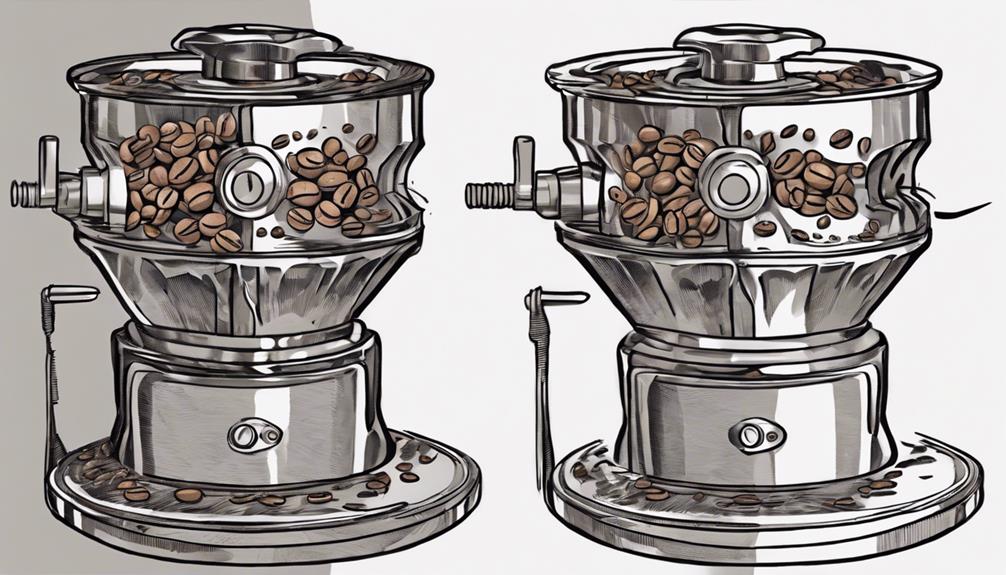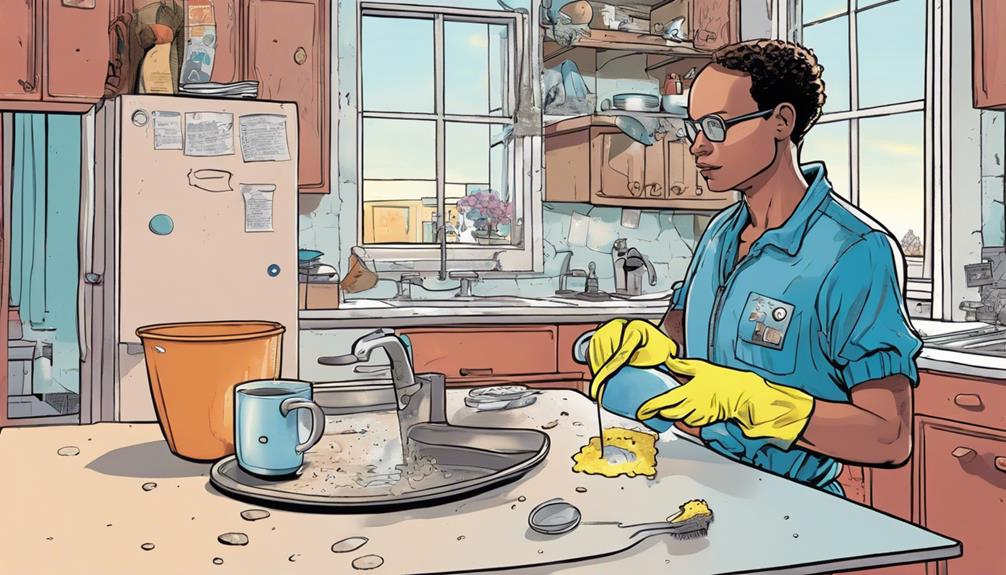Ready to sign up and enjoy a variety of benefits at Coffee Bean? Enroll in their membership program to collect points on your purchases and receive exclusive rewards. You can select from Purple, Platinum, or VIP tiers that come with their own set of advantages. Redeem your points easily for free items and discounts either through the app or in-store. Stay informed about new offers with push notifications. Receive assistance whenever necessary. Start today and explore the advantages of being a Coffee Bean member! Unlock additional perks like birthday treats, personalized offers, and early access to new products. As a member, you’ll also get the chance to take part in exclusive events and tasting sessions. Join now and be part of a community dedicated to reviving a coffee plant and promoting sustainable practices in the coffee industry.
Key Takeaways
- Sign up for Coffee Bean membership via app or in-store.
- Earn points with every purchase to unlock perks.
- Progress through tiers for exclusive benefits.
- Access rewards like free items and discounts.
- Enjoy seamless redemption process for perks.
Rewards Program Details
Earn points with every purchase at Coffee Bean to access exciting rewards and benefits through their membership program. With Coffee Bean Rewards, each dollar spent gets you closer to earning a free beverage or other complimentary items. As you accumulate points, you can redeem them for various rewards at different tier levels within the program.
Not only can you enjoy free items, but you also gain access to exclusive offers and rewards as a VIP member. The perks don't stop there – easily redeem your hard-earned rewards through the Coffee Bean app or by simply showing your phone to the cashier when making a purchase. This seamless process guarantees that you can enjoy your rewards without any hassle.
Stay in the loop about the latest rewards and promotions by enabling push notifications in the app. This way, you'll never miss out on exciting offers and can make the most of your Coffee Bean Rewards membership.
Tier Benefits Overview

Explore the exclusive benefits available at different tier levels in the Coffee Bean Rewards program. As a member of the Purple Tier, you can enjoy a free item once you accumulate 50 points.
Moving up to the Platinum Tier or VIP Tier, both levels offer the perk of a complimentary item for just 40 points. What sets the VIP Tier apart is the additional access to exclusive offers and rewards, making it a desirable option for avid Coffee Bean patrons.
Regardless of the tier you belong to, all members are eligible for various promotional offers and rewards, ensuring that everyone can benefit from being part of the program.
Whether you prefer lattes, cappuccinos, or simply a good old cup of brewed coffee, these tier benefits add an extra layer of enjoyment to your Coffee Bean experience.
Redeeming Rewards Steps

To redeem rewards, simply utilize the push notifications available in the app or present your phone to the cashier. By following these easy steps, you can quickly access and enjoy the benefits of your Coffee Bean membership. Once you receive a notification about an available reward, open the app to view it in your rewards tab. From there, you can choose to redeem it in-app or show the reward directly to the cashier at the counter. For VIP members, there are exclusive rewards waiting to be claimed, adding an extra touch of delight to your experience. Additionally, staying tuned to the app will keep you informed about special offers and promotions, ensuring you never miss out on saving or earning more with each visit.
| Redeeming Rewards Steps | |
|---|---|
| Step 1 | Utilize push notifications |
| Step 2 | View rewards in the app tabs |
| Step 3 | Redeem in-app or show to cashier |
Customer Support Options

To access support articles for assistance with your Coffee Bean membership inquiries, head to their official website.
If you need personalized help, don't hesitate to contact Coffee Bean support directly.
Having access to these support options guarantees a smooth experience as a Coffee Bean member.
Support Articles Access
Find answers to common questions about the Coffee Bean rewards program by browsing through a variety of support articles available. These articles are designed to provide detailed information and guidance on how to make the most of your Coffee Bean membership. Whether you have inquiries about earning rewards, redeeming points, or understanding the perks associated with your membership, the support articles offer extensive assistance.
Accessing customer support options is simple and convenient, making sure that any issues or concerns you may have regarding your Coffee Bean membership are addressed promptly. The support services provided by Coffee Bean are tailored to help members navigate their rewards program effectively.
Additionally, utilize the store locator feature to easily find nearby Coffee Bean locations for in-person support if you prefer face-to-face assistance.
The knowledge base available to members offers a wealth of information to make certain that you have all the support you need to maximize your Coffee Bean rewards program experience.
Contacting Customer Support
Access personalized assistance for your Coffee Bean membership inquiries by contacting customer support through email or phone. The Coffee Bean website offers support articles that address common questions regarding memberships. If you need more tailored help, reach out to Coffee Bean support either via email or phone to get personalized assistance with your membership inquiries. Additionally, you can find information about Coffee Bean Support, including store locators and FAQs, to help resolve any concerns you may have about your membership. VIP members benefit from dedicated support for their membership perks and exclusive offers. For in-person assistance, use the store locator feature to find a nearby Coffee Bean location. Utilize the following table to see the available customer support options:
| Support Options | Contact Information | Availability |
|---|---|---|
| Email Support | support@coffeebean.com | 24/7 |
| Phone Support | 1-800-123-4567 | Mon-Sat 9am-5pm PST |
| Store Locator | Online tool | Check website |
Copyright Information Summary

The Copyright Information Summary for the Coffee Bean rewards program highlights the emphasis on protecting intellectual property rights. As a member, it's essential to respect the copyright guidelines to maintain the integrity of the program.
Here's a quick overview to keep in mind:
- Copyright for the Coffee Bean rewards program is listed as © 2024, indicating the year of establishment.
- All rights are reserved for the Coffee Bean rewards program, ensuring protection of intellectual property.
The program offers support for members, including access to a knowledge base and a store locator feature. Members can rely on the program's customer support for assistance with any queries related to their membership. The program emphasizes the importance of copyright and intellectual property rights, showcasing a commitment to protecting original content.
Understanding and adhering to these copyright regulations won't only benefit the program but also contribute to a positive experience for all members.
Related Content and Resources

You'll want to know more about the benefits you can enjoy as a Coffee Bean member.
Understanding the registration process is essential to start enjoying those perks.
Let's explore Membership Benefits and the Registration Process in more detail.
Membership Benefits
As a Coffee Bean member, you can earn points for every dollar you spend and enjoy exclusive rewards based on your tier level. By becoming a member, you reveal a range of benefits tailored to enhance your experience with us.
Here are some of the perks you can look forward to:
- Earn points for every $1 spent.
- Enjoy exclusive rewards like free items based on your tier.
- Receive special perks such as birthday rewards and welcome rewards.
- Access support resources, store locators, and contact information.
- Stay updated on promotions and offers through push notifications and in-app visibility of rewards.
These benefits aim to make your Coffee Bean membership more rewarding and convenient. Join us today to start enjoying these perks and many more!
Registration Process
Upon downloading the rewards app, begin your Coffee Bean membership registration to access exclusive benefits and start earning points. The process is simple and free, allowing you to kickstart your journey to rewards.
Upon registration, you'll receive a welcome reward to get you started. As a member, every dollar spent at Coffee Bean locations earns you points that can be redeemed for various rewards. The membership program offers different tiers – Purple, Platinum, and VIP – each with its own set of perks.
From free items for redeeming points to exclusive offers for VIP members, there are plenty of advantages to enjoy. Whether you prefer redeeming rewards in-app or showing your phone to the cashier at participating stores, the process is convenient.
Stay informed about your rewards status through push notifications and easily access support articles for any assistance you may need. Start your registration today and begin accessing the benefits of being a Coffee Bean member!
Frequently Asked Questions
Is Coffee Bean Membership Free?
Yes, Coffee Bean Membership is free! You can sign up and start earning points with your purchases. Enjoy perks like a welcome reward and birthday treat. Redeem points for freebies and get exclusive offers.
How to Get a Free Drink at Coffee Bean?
Want a free drink at Coffee Bean? Just sign up for their Rewards Program! Earn points on purchases, reach point thresholds for free items, and redeem your points for a free drink easily through the app or in-store.
How to Get a Coffee Bean Card?
To get a Coffee Bean card, sign up for their rewards program online or in-store for free. Earn points for every $1 spent and redeem for free items. Enjoy exclusive offers and easily redeem rewards in-app or by showing your phone.
Did Coffee Bean Change Their Rewards Program?
Yes, Coffee Bean did change their rewards program. Now, you can earn points for purchases, get welcome and birthday rewards, and enjoy exclusive offers as a VIP member. Redeem rewards easily in-app or in-store.
Conclusion
So, why wait? Join The Coffee Bean rewards program today and start enjoying exclusive perks like discounts, free drinks, and more!
Don't worry about the application process being complicated – our team is here to help every step of the way.
Don't miss out on all the benefits waiting for you as a member. Sign up now and start reaping the rewards!









